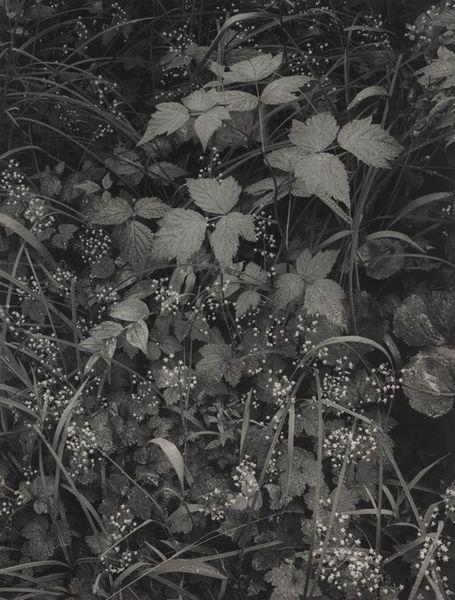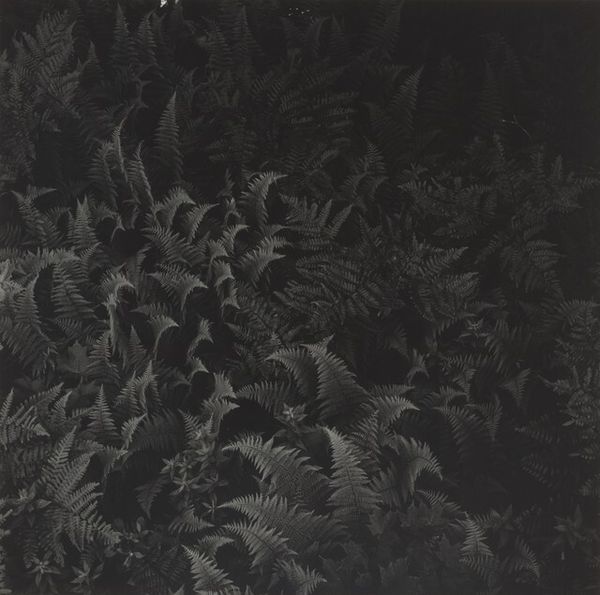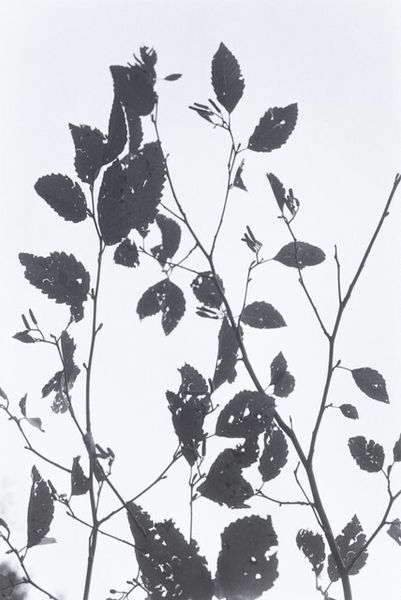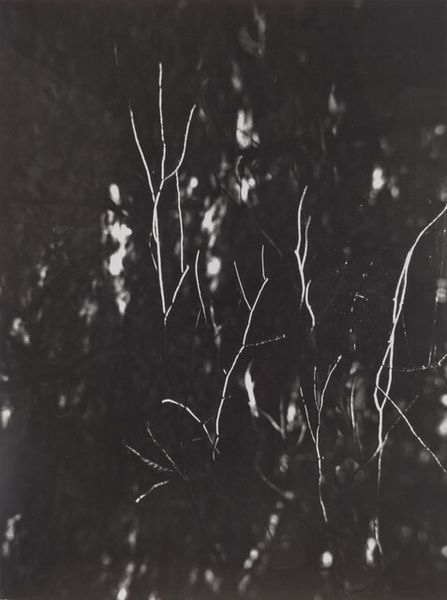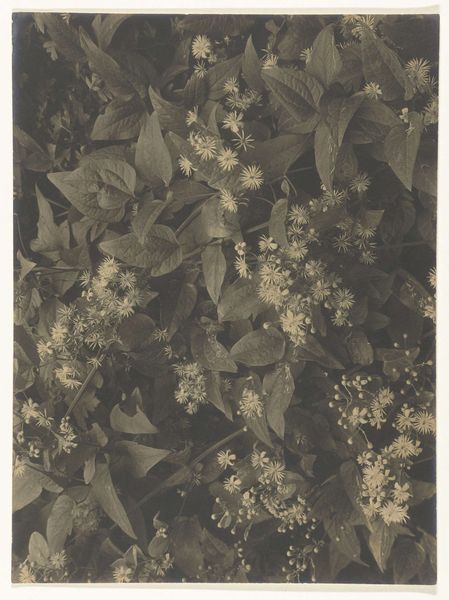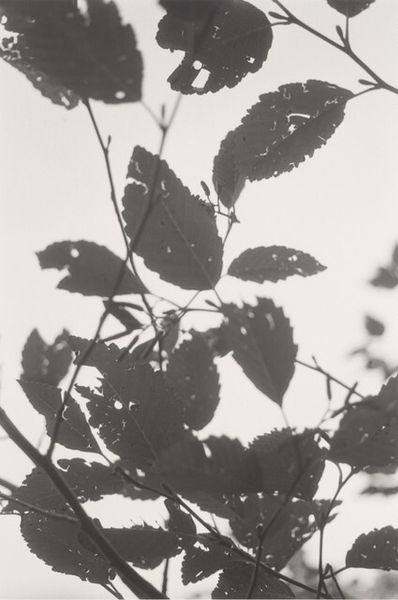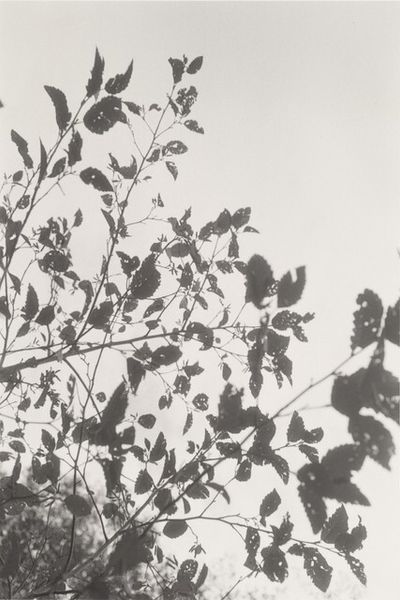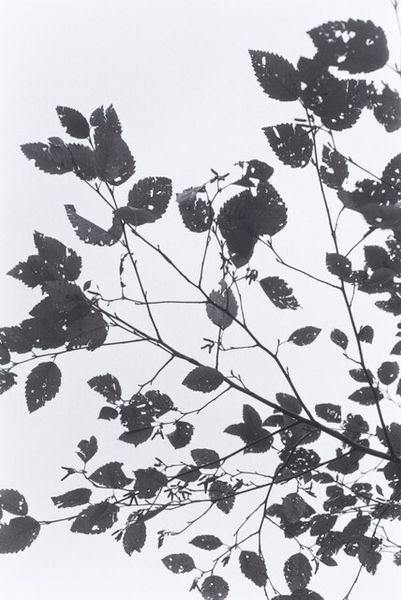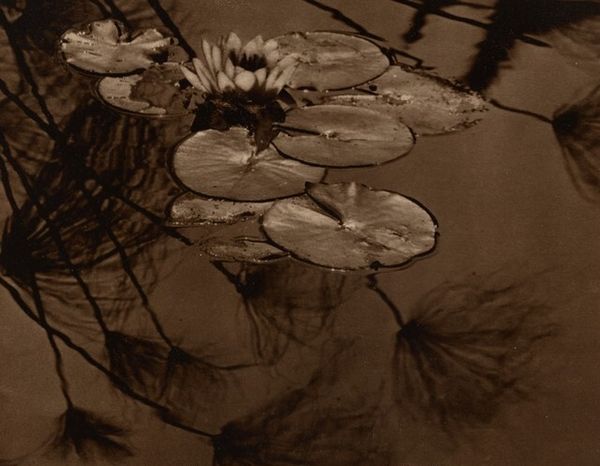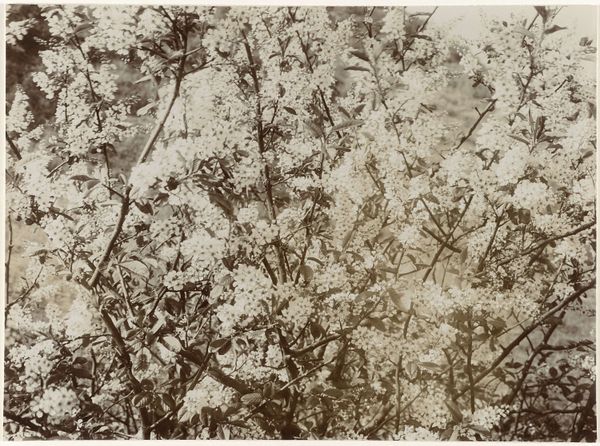
photography, gelatin-silver-print
#
still-life-photography
#
organic
#
landscape
#
photography
#
organic pattern
#
gelatin-silver-print
#
organic texture
#
modernism
#
realism
Dimensions: overall: 36.9 x 47.5 cm (14 1/2 x 18 11/16 in.)
Copyright: National Gallery of Art: CC0 1.0
Curator: Ansel Adams’ "Leaves, Mount Rainier National Park, Washington" is a gelatin-silver print, created sometime between 1942 and 1981. It depicts a close-up of foliage, ferns and other plant life, glistening with moisture. Editor: It's so visually dense, almost overwhelming at first glance. A textured landscape comprised entirely of leaves. You can practically feel the dampness clinging to them. Curator: Adams' work often exists in a nexus of environmental activism, especially given how his photography helped shape our collective visual consciousness regarding the American landscape. His choice to highlight the intricacies of the undergrowth asks us to consider value in the smaller details. Editor: And those details are everything here! Looking closely, you start to appreciate how meticulously the composition directs your eye. The interplay of light and shadow on each leaf brings an individual quality and elevates these "lowly" specimens. Considering its period of creation, his vision defies a manufacturing-focused idea of aesthetics. Curator: Absolutely, it presents nature not as a resource to be exploited, but as a complex system of interdependent elements, each essential. We need to read beyond its purely aesthetic appeal, and toward it being a symbol for his intersectional political ideologies, and that of the time. Editor: That's fascinating, but, personally, I'm also interested in the labor behind crafting the image. Thinking about the process, Ansel Adams, in darkrooms with smelly liquids coaxing forth these shades. Each print becomes a physical manifestation of hours dedicated to observation, chemical manipulation and intention. The time is translated and captured in the final image. Curator: Indeed. And that deliberate act of framing a space as an environment encourages a discourse of preservation and sustainable approaches towards resources, at a time of post-war urban and industrial expansion. Editor: Agreed. So ultimately it's an intricate picture of process and respect—both artistic and environmental. Curator: Yes. And a profound reminder that change starts at the roots. Editor: Precisely, or perhaps, with the leaves!
Comments
No comments
Be the first to comment and join the conversation on the ultimate creative platform.

